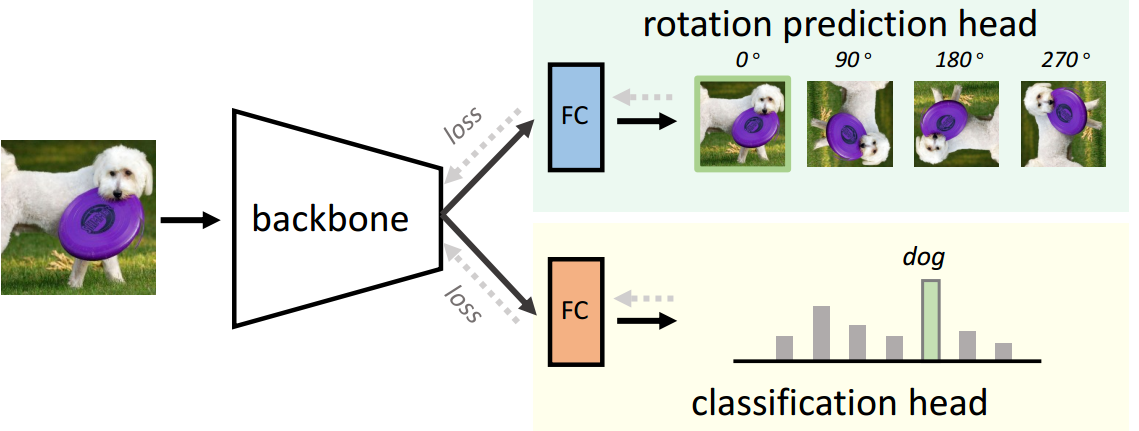What Does Rotation Prediction Tell Us about Classifier Accuracy under Varying Testing Environments?
[Paper] [ICML'21 Project]
PyTorch Implementation
This repository contains:
- the PyTorch implementation of AutoEavl.
- the example on CIFAR-10 setup (use imgaug)
- linear regression
Please follow the instruction below to install it and run the experiment demo.
Prerequisites
- Linux (tested on Ubuntu 16.04LTS)
- NVIDIA GPU + CUDA CuDNN (tested on GTX 2080 Ti)
- CIFAR-10 (download and unzip to
PROJECT_DIR/data/) - CIFAR10.1 (download and unzip to
PROJECT_DIR/data/CIFAR-10.1) - Please use PyTorch1.5 to avoid compilation errors (other versions should be good)
- You might need to change the file paths, and please be sure you change the corresponding paths in the codes as well
Getting started
- Install dependencies
# Imgaug (or see https://imgaug.readthedocs.io/en/latest/source/installation.html) conda config --add channels conda-forge conda install imgaug - Creat synthetic sets
# By default it creates 500 synthetic sets python generate_synthetic_sets.py - Learn classifier on CIFAR-10 (DenseNet-10-12)
# Save as "PROJECT_DIR/DenseNet-40-12-ss/checkpoint.pth.tar" # Modified based on the wonderful github of https://github.com/andreasveit/densenet-pytorch python train.py --layers 40 --growth 12 --no-bottleneck --reduce 1.0
- Test classifier on synthetic sets
# 1) Get "PROJECT_DIR/accuracy_cls_dense_aug.npy" file # 2) Get "PROJECT_DIR/accuracy_ss_dense_aug.npy" file # 3) You will see Rank correlation and Pearsons correlation # 4) The absolute error of linear regression is also shown python test_many.py --layers 40 --growth 12 --no-bottleneck --reduce 1.0
- Correlation study
# You will see correlation.pdf; python analyze_correlation.py
Citation
If you use the code in your research, please cite:
@inproceedings{Deng:ICML2021,
author = {Weijian Deng and
Stephen Gould and
Liang Zheng},
title = {What Does Rotation Prediction Tell Us about Classifier Accuracy under Varying Testing Environments?},
booktitle = {ICML},
year = {2021}
}
License
MIT




![[CVPR 2022] PoseTriplet: Co-evolving 3D Human Pose Estimation, Imitation, and Hallucination under Self-supervision (Oral)](https://github.com/Garfield-kh/PoseTriplet/raw/main/assets/dual-loop-detail-v3.jpg)

